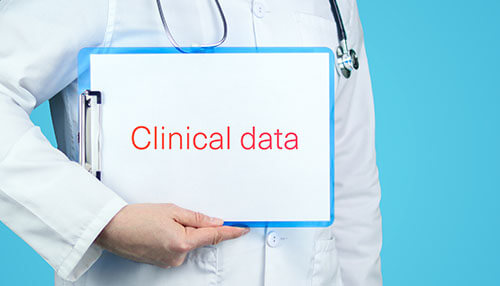Clinical data management (CDM) is the process of collecting, cleaning, verifying, and reporting data used in clinical trials. It utilizes an array of tools designed to meet demands for different purposes. CDM departments have several responsibilities. Including identifying the source and analyzing the validity. Assessing completeness, and documenting all sources from which clinical trial data has been obtained. These include any deletions or corrections made to the source document.
How Technology Benefits Clinical Data Management (CDM)
Technology has been revolutionizing the Clinical data management (CDM) industry, enabling better organization and faster analysis of patient records. From validating Case Report Forms or CRF specs against eCRFs faster to extracting meaning from unstructured texts, all these lead to accelerating the process of providing high-quality care to patients, resulting in shorter wait times and better outcomes.
It also allows for greater transparency and collaboration between medical professionals. Ensuring that every area of the healthcare system is functioning as it should be to provide optimal care to patients.
Here’s a closer look at how technology makes CDM more efficient, effective, and accurate:
Allows For Greater Transparency And Collaboration Between Medical Professionals
There are many stages in the Clinical data management (CDM) process. Medical professionals can use technology to make it more efficient. Data management software, telemedicine, and cloud computing are among the technologies that improve transparency and collaboration.
Using Clinical data management (CDM) software, doctors and researchers can enter information into an electronic health record (EHR). And transmit it to other professionals so they may review and provide feedback. They can also collaborate with their peers on the necessary interventions for a patient under study.
Another area of technology that makes collaboration between medical professionals easier is telemedicine. With telemedicine tools, specialists worldwide can share screens and join videoconferences. They can also engage in virtual rounds where colleagues review cases electronically while discussing them on a call.
In addition, they can create workflows where groups of physicians or providers see the same case, allowing them to offer input simultaneously.
Lastly, cloud computing has allowed medical professionals to access their patients’ records anywhere at any time. It still comes with some challenges, but it lets them share information such as how a patient reacted to specific treatments, costs incurred during the treatment course, results of research projects conducted, and many others.
Supports Accuracy And Speedy Data Analysis
Data must be accurate and complete for clinical trials. Human errors can be limited, if not eradicated, with the support of artificial intelligence (AI), machine learning, big data, and natural language processing.
AI has allowed many applications to improve the accuracy and completeness of clinical datasets. The applications can also automate much of the data management by identifying missing information, updating current information as it changes over time, and tracking when an event occurred and which person was responsible for it. Some even help healthcare providers know where errors may have occurred when reviewing their data files.
Meanwhile, machine learning as a subset of AI, allows various programs to learn from past actions, continually adapting until they achieve optimum performance. It doesn’t just work with numerical information; algorithms are developed that could help identify things like adverse drug reactions, problems with lab tests, and other patient safety issues.
Big data is another emerging technology that offers promise for improving CDM. Large amounts of disparate data collected from various sources across organizations, systems, and people are filtered so that only clinically relevant information is analyzed. Organizations are now turning to them to analyze large volumes of complex medical datasets more quickly than before.
Ensures Compliance With Internal Protocols And State Regulations
Technology plays a vital role in Clinical data management (CDM) through facilitating efficient data organization and storage. It in addition ensures adherence to internal protocols and kingdom policies, selling the general integrity of the statistics. Various facts control platforms are designed in accordance with the Health Insurance Portability and Accountability Act to protect patient privacy and confidentiality. This compliance helps in instilling acceptance as true with among sufferers and healthcare companies regarding the steady management of sensitive medical information.
The Future Of Clinical Data Management (CDM)
As it stands, the integration of technologies in CDM encounters various obstacles that must be addressed. These impediments encompass apprehensions regarding privacy, ethical dilemmas related to liability considerations, and the necessity for robust fraud prevention strategies to safeguard against potential risks and vulnerabilities within the system.
However, over the direction of time, those worries are expected to progressively diminish as technological improvements continue to progress. Through the usage of state-of-the-art smart algorithms, records may be correctly anonymized, encrypted, and de-identified, thereby stopping any possibility of extracting private records from the statistics. This stronger records safety degree no longer most effectively safeguards personal privacy but additionally instills self-assurance within the general integrity of the statistics control procedure.
Therefore, no matter the imperfections that still exist within Clinical facts management (CDM), there’s a constructive outlook for its destiny increase and development. With improvements in era and best practices, the sector of CDM is predicted to evolve undoubtedly over time, imparting more desirable performance and outcomes.



